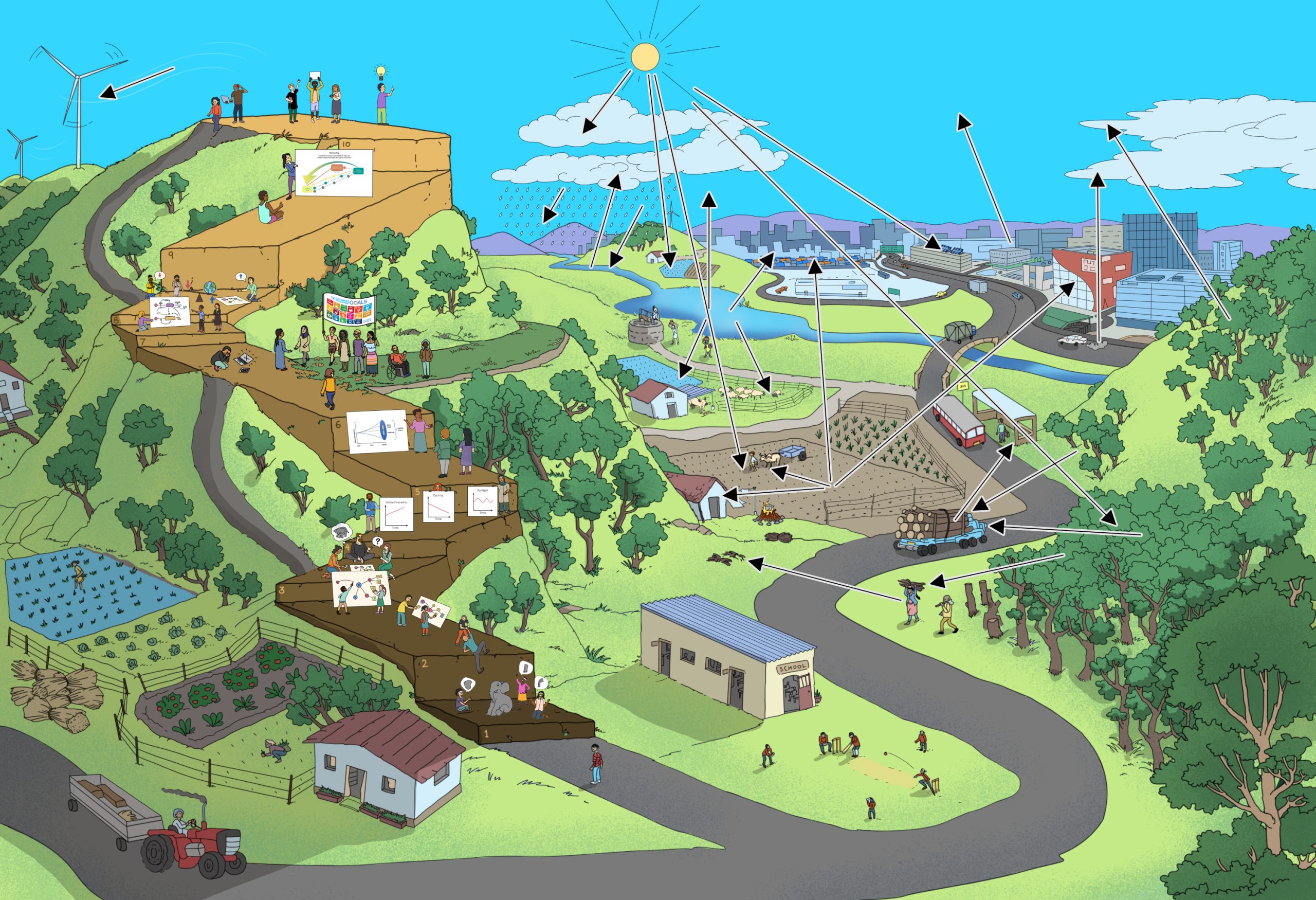Future Workshop
Suitable for Step 8 and 9
Duration
1-3 days
Material Needed
Prepared documents or presentations on the topic as a basis for the method
Group size
Up to 20 per group
Objective
To develop ideas for the future of a campus, neighbourhood, city or region by jointly considering problems, challenges and potential solutions.
Description
Broadly, the process organizes a workshop for “thinking about our future”. The learning method has three main steps.
The experience of developing the script and visuals helps learners to synthesize their learning and thinking and contributes to developing systemic competencies. In addition, the substantive content collected and communicated using this method adds to the learners’ individual development.
Stage 1 The phase to critique
Participants discuss the reality of the topic they are working on. For example, with ‘cotton’ as the topic, the question could be: How is the world cotton market to be characterised? If the learners find out that the cotton production and trade system have low wage labour, environmental pollution, severe health problems due to agro-chemicals, unfair trade conditions etc. they should judge the reality as problematic, which has to be reformed.
Stage 2 The fantasy phase
Learners think and develop without any limits, a future that surmounts the recognized or known problems. It is up to them, what they create and how they shape the future, whether it is an even more technical, or a strictly sustainable future.
Stage 3 The realization check
All the suggestions are discussed. Each idea is assessed for whether there is a realistic possibility to realize it. To use the cotton example again: a suggestion could be to produce less, but eco-friendly cotton, pay higher wages to the workers and charge for the guarantee of the biodegradability of the products. This is not an unrealistic scenario.
The overall idea of the learning method “Future Workshop” is to open a space where unthought or undiscussed ideas can come up and therefore might open new insights into topics that are assumed to be well-known and well-understood.
Contribution to Systems Thinking competence
The method helps learners to:
- Identify a new vision of the future
- Combine their understanding of the dynamics of the system
- Explore how changes in single factors of the system may help to reach the vision

